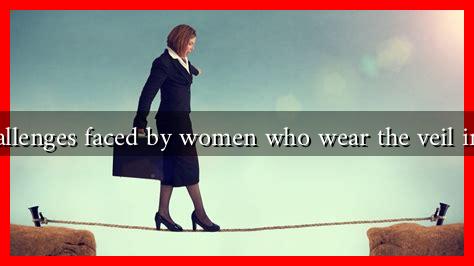-
Table of Contents
Challenges Faced by Women Who Wear the Veil in the Workplace
The veil, often associated with cultural and religious identity, is worn by many women around the world. While it serves as a symbol of faith and personal choice, it can also present unique challenges in the workplace. This article explores the various obstacles faced by women who wear the veil, including discrimination, workplace culture, and the impact on career advancement.
Understanding the Veil: A Symbol of Identity
The veil, which can take various forms such as the hijab, niqab, or burqa, is worn by Muslim women for a variety of reasons, including religious beliefs, cultural practices, and personal choice. According to a 2017 Pew Research Center study, approximately 1.8 billion Muslims live worldwide, with a significant number of women choosing to wear the veil. However, this choice can lead to challenges in professional environments.
Discrimination and Bias in the Workplace
One of the most significant challenges faced by women who wear the veil is discrimination. This can manifest in various forms:
- Hiring Bias: Studies have shown that women who wear the veil may face difficulties in securing job interviews. A 2016 study published in the journal “Social Psychology” found that candidates with Muslim-sounding names and who wore the hijab were less likely to be called for interviews compared to their non-veiled counterparts.
- Workplace Harassment: Women wearing the veil may experience harassment or microaggressions from colleagues or clients. This can create a hostile work environment, leading to decreased job satisfaction and mental health issues.
- Promotion and Advancement: Discrimination can also affect career progression. A report by the Institute for Social Policy and Understanding (ISPU) found that Muslim women often face barriers to promotions, with many feeling that their appearance negatively impacts their professional image.
Cultural Misunderstandings and Stereotypes
Another challenge is the cultural misunderstandings and stereotypes associated with wearing the veil. Many people hold preconceived notions about Muslim women, which can lead to:
- Negative Stereotypes: Women who wear the veil may be unfairly labeled as oppressed or uneducated, which can affect how they are perceived in professional settings.
- Lack of Awareness: Colleagues may lack understanding of the significance of the veil, leading to awkward interactions or insensitive comments.
- Social Isolation: The veil can create a barrier to social integration within the workplace, making it difficult for veiled women to build relationships with colleagues.
Legal and Policy Challenges
In some countries, legal frameworks regarding religious attire in the workplace can pose additional challenges. For instance:
- Dress Codes: Some organizations enforce strict dress codes that may prohibit religious attire, forcing women to choose between their faith and their job.
- Legislation: In countries like France, laws banning religious symbols in public spaces have led to significant challenges for Muslim women in the workforce.
Case Studies: Real-Life Experiences
Several case studies highlight the challenges faced by women who wear the veil in the workplace:
- Case Study 1: A Muslim woman in the UK reported being passed over for a promotion despite having the necessary qualifications. She believed her hijab played a role in the decision-making process.
- Case Study 2: In Canada, a veiled woman faced harassment from a client who refused to work with her due to her appearance, leading to a formal complaint against the company.
Conclusion: Navigating the Challenges
Women who wear the veil in the workplace face a myriad of challenges, from discrimination and cultural misunderstandings to legal barriers. It is essential for employers to foster an inclusive environment that respects diversity and promotes understanding. Training programs on cultural competency and anti-discrimination policies can help mitigate these challenges. By addressing these issues, organizations can create a more equitable workplace for all employees, regardless of their appearance or beliefs.
In summary, while the veil is a personal choice for many women, it can lead to significant obstacles in professional settings. Awareness, education, and policy changes are crucial in supporting these women and ensuring they can thrive in their careers.
For further reading on this topic, you can explore resources from the Institute for Social Policy and Understanding.


